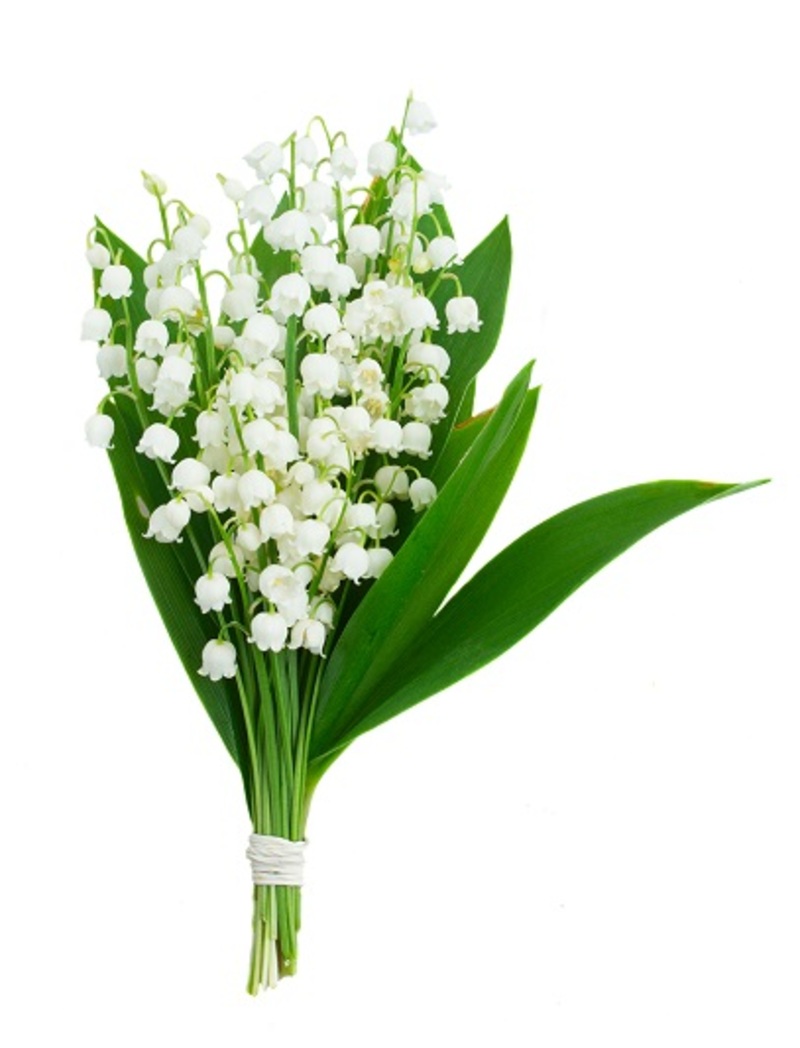Maximize the Lifespan of Your Poinsettias
Posted on 13/06/2025
Maximize the Lifespan of Your Poinsettias: An In-Depth Guide
Poinsettias are iconic festive plants that brighten up homes during the winter holidays. However, many plant lovers struggle to keep their poinsettias vibrant and healthy past the New Year. If you want to ensure your poinsettias live well beyond the holiday season, this comprehensive guide will provide you with all the information you need to extend the life of your poinsettias and enjoy their colorful bracts for months, or even years, to come.
Understanding the Poinsettia
Poinsettias (Euphorbia pulcherrima) are tropical plants native to Mexico and Central America. Their bright red, pink, cream, or white "flowers" are actually bracts--modified leaves--with the true flowers being the tiny yellow buds at the center. Understanding their origins helps us provide the right care to prolong the lifespan of poinsettias.
Why Do Poinsettias Fade?
- Improper watering--either too much or too little
- Lack of light--not enough bright, indirect sunlight
- Temperature extremes--poinsettias dislike cold drafts or intense heat
- Neglect after the holidays--failure to provide post-holiday care
Recognizing these issues is the first step to helping your poinsettias thrive. Follow the guidance below to ensure your plant remains beautiful all year long.

Choosing and Bringing Home a Healthy Poinsettia
What to Look For When Buying Poinsettias
- Vibrant color: The bracts should be richly colored, with no wilting or browning edges.
- Healthy foliage: Leaves should be deep green, fully extended, and free of spots.
- Intact flowers: Central yellow buds should be present and not dropping off.
- No pests or diseases: Check for sticky residue, holes in leaves, or white powdery mildew.
Choosing a robust plant increases your chances to maximize the lifespan of your poinsettia from the start.
Proper Transportation Tips
- Shield from cold winds and temperatures below 50?F (10?C).
- Wrap in a paper bag or protective covering when transporting.
Poinsettias are sensitive to sudden temperature changes, which can cause leaf drops or discoloration.
Essential Care Tips to Prolong Poinsettia Lifespan
Creating the Ideal Environment
Poinsettias flourish when mimicking their native climate. Here's how you can optimize their growing environment:
- Light: Place the plant in bright, indirect sunlight. Windows with southern or eastern exposure are ideal.
- Temperature: Maintain temperatures between 60-70?F (15-21?C). Avoid drafts, cold windows, and nearby heaters.
- Humidity: Keep humidity at moderate levels. In dry winter homes, use a humidifier or set the pot on a pebble tray with water.
- Air Circulation: Ensure good airflow, but avoid sudden gusts or fans blowing directly on the plant.
Watering Techniques for Longer Poinsettia Life
Watering is the most common issue leading to a short poinsettia lifespan. Follow these guidelines:
- Check soil moisture daily. Insert your finger one inch into the soil; water only when the top inch feels dry.
- Water thoroughly but let the excess drain--never let the pot sit in standing water!
- Avoid overwatering as soggy soil leads to root rot and yellowing leaves.
- Remove decorative foil or poke drainage holes to prevent water buildup.
For best results, use room-temperature water and irrigate at the base rather than from above, keeping leaves dry.
Feeding and Fertilizing for Vibrant Long-Lived Poinsettias
When and How to Fertilize
While in bloom, poinsettias don't need much fertilizing. Start fertilizer treatments once the blooms fade (usually late winter or early spring):
- Use a balanced, all-purpose houseplant fertilizer (such as 10-10-10 or 20-20-20) diluted to half strength.
- Apply fertilizer every 2-4 weeks from spring through summer.
Over-fertilizing can harm your poinsettia--less is more. Stop feeding by mid-autumn to encourage blooming.
Repotting for Extended Lifespan
Healthy root systems are the backbone of long-living poinsettias. In spring, after the plant finishes blooming and growth resumes:
- Repot into a slightly larger container with fresh, well-draining potting mix.
- Prune back stems to about 6 inches to encourage bushier growth.
Handle roots gently to avoid unnecessary stress and always use sterilized pruning shears.
Pruning and Shaping to Encourage Longevity
Why Prune Your Poinsettia?
- Encourages bushy growth instead of leggy, sparse plants
- Stimulates new branches for more future blooms
- Removes dead or diseased plant material
How To Prune for Maximum Lifespan
- In spring (April-May), trim all stems to about 4-6 inches tall.
- Pinch tips periodically throughout summer to promote side-shoots.
- Always wear gloves--the plant produces a milky sap that can irritate skin.
Regular pruning helps keep your poinsettia full and healthy for many seasons.
Managing Light for Reblooming and Longevity
The Importance of Photoperiod
To encourage reblooming and coloration in winter, poinsettias require short days and long nights from September onwards:
- Provide 14-16 hours of complete darkness daily for 8-10 weeks.
- Cover the plant with a box or place it in a closet from evening until morning.
- Expose to bright, indirect light during the day.
Any light pollution interrupts this process and can prevent the plant from developing colored bracts for the next season.
Year-Round Placement
- December-February: Bright, indirect light indoors, away from drafts
- March-September: Can move outdoors to a shaded patio--but avoid direct midday sun and bring inside if temperatures dip below 55?F (13?C)
Correct light management is crucial to maximizing the poinsettia's lifespan and beauty.
Pest and Disease Prevention for Vigorous Poinsettias
Common Problems
- Whiteflies: Look for small white insects and sticky residue. Use insecticidal soap or yellow sticky traps.
- Spider mites: Fine webbing and speckled leaves signal mites. Increase humidity and use miticides if needed.
- Root rot: Caused by prolonged soggy soil. Ensure excess water can drain away after watering.
- Powdery mildew: White, powdery coating on leaves. Isolate afflicted plants and treat with fungicide.
Monitor plants regularly for pests or illnesses, catching issues early to prevent major problems and helping your poinsettia live longer.
Seasonal Care: From One Year to the Next
A Year in the Life of a Poinsettia
- Winter (Bloom Season):
- Keep indoors in bright, indirect light.
- Maintain steady temperature and humidity.
- Water only when the top inch of soil is dry.
- Spring:
- Once bracts fade, trim stems and repot if needed.
- Begin monthly fertilization.
- Summer:
- Move outdoors to an indirect light area if desired.
- Continue feeding and pinching back growth.
- Early Fall:
- Move back indoors before nighttime temperatures get cold.
- Start short-day/long-night regimen in late September to trigger bract coloration.
- Late Fall:
- Stop pinching tips after mid-August so flower buds can develop.
Frequently Asked Questions About Maximizing the Life of Poinsettias
Can poinsettias last year after year?
Yes! With proper care, your poinsettia can thrive for several years and rebloom every winter. Many plant enthusiasts have the same poinsettia gracing their homes for a decade or longer.
Are poinsettias toxic to pets?
Poinsettias contain a mild irritant in their milky sap, which can cause upset stomach or drooling if nibbled by pets. They are not highly toxic, but it's best to keep them out of reach of curious animals.
How can I keep my poinsettia's leaves from dropping?
Leaf drop usually indicates watering problems, cold drafts, or light deprivation. Adjust placement, monitor watering, and avoid sudden temperature changes for best results.

Expert Tips to Extend Poinsettia Longevity
- Rotate the plant weekly to ensure even exposure to light, which maintains symmetrical growth.
- Monitor for signs of stress like yellowing leaves or dropping bracts, and address root causes promptly.
- Don't fertilize in bloom--wait until after the blooming period to start feeding your plant.
- Upgrade pots if roots are circling or water drains too quickly.
Conclusion: Enjoy Your Poinsettia for Months and Years
Maximizing the lifespan of your poinsettia is a rewarding challenge that transforms a temporary holiday display into a long-lasting part of your indoor garden. By selecting a healthy plant, nurturing it with the right care, understanding its natural rhythms, and responding promptly to its needs, you can enjoy colorful bracts year after year.
With attention and consistency, your poinsettia will continue to brighten your home far beyond the festive season--proving that with the right knowledge, poinsettia care can lead to long-lasting beauty and joy.
Embrace these simple yet powerful strategies and watch as your poinsettia flourishes, providing cheer and vibrant color to your space all year round!







